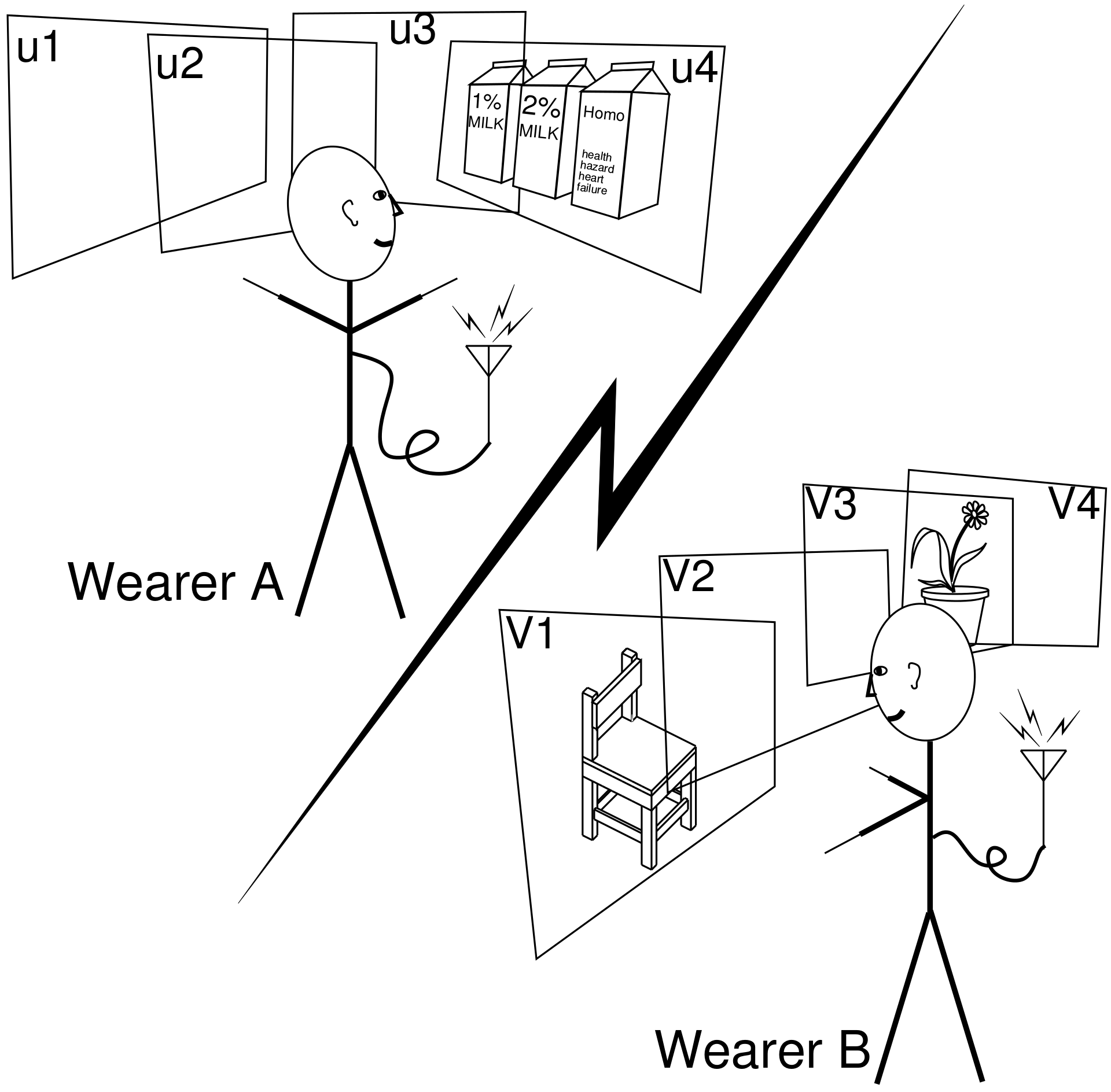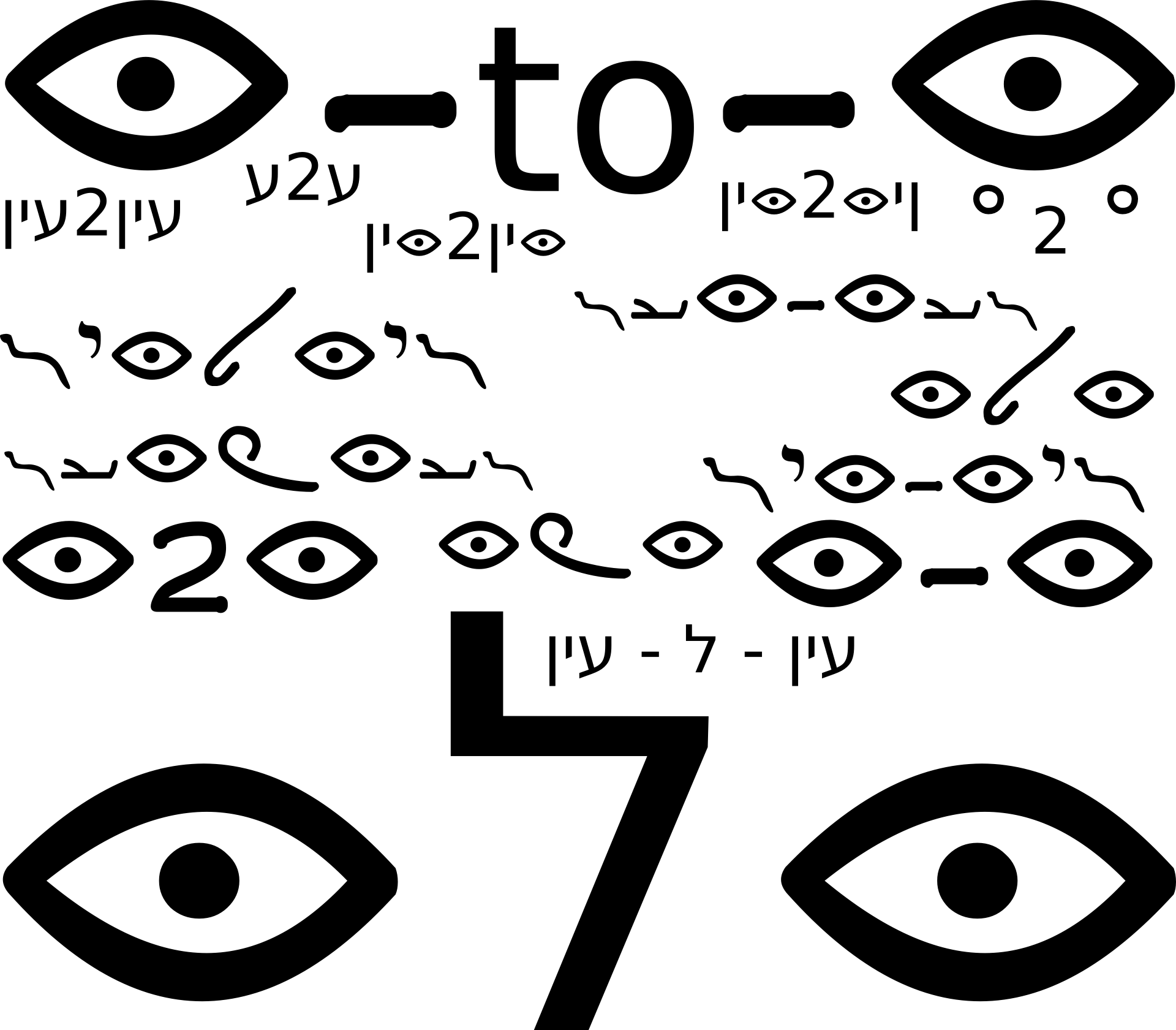

About the eye2eye logo designs: The logo designs by S. Mann, derive from the letter "ayin" of many ancient alphabets which means "eye". The earliest known alphabet has 22 letters in it, and each letter was derived from a hieroglyph. Each letter, by itself, was a picture of the object it sounded like. In fact the word "alphabet" comes from the first two letters, "alpha" (or "aleph"), which means "ox", and "bet" which means "house" (and is actually a pictorial drawing of a house). Each letter had an important meaning, e.g. the fourth letter, "dalet" means "door", the 13th letter, "mem" means "water" (and evolved into our letter "M" which still looks a bit like the wavy line for the hieroglyph of water), and the 16th letter "ayin" means "eye". Each letter means something important and fundamental to all of human civilization. The letter "ayin", in early writing, looks like a human eye. This letter evolved into our letter "O", which still, after thousands of years, somewhat resembles the eye. To this day, "ayin" in Hebrew, Arabic and Maltese still means "eye" [Wikipedia, Ayin].
This is done through Digital Eye Glass, or Wearable Computing, a technology invented by S. Mann (see related invention, "Wearable Computing"), or by mobile computing, portable computing, or a combination of desktop and mobile, portable, and wearable computing. One person streams live video of what they see, to another person who can then stream live video back.
The "magic" in (e)y(e)2(e)y(e)™ is in the shared image stabiliziation. Normally when you look at someone else's video feed, your visual and vestibular cues don't match, so you feel sick and dizzy (e.g. your inner ear and sense of balance don't match what you see, because you're not actually moving around the same way the other person does). The magic of related inventon Video Orbits allows each person's view to be mathematically stablized in the other person's coordinates, and vice-versa. This means that it is easy and practical to swap viewpoints with anyone we want.
eYe2eYe™ is about to totally revolutionize video conferencing. Physicians in remote areas can bring remote experts into their visual space. If you're walking home late at night you can share your point-of-eye (see related invention, Personal Safety Device) for a safe walk home. If you're lost, you can call up a friend who knows the area.
The y2y™ technology can even allow you to swap viewpoints with a totally virtual being, i.e. it brings the power of AI (Artificial Intelligence) into your brain. In this sense, you share your world with an AI network. For example, the Wearable Face Recognizer is a remote AI expert you can see y2y with. (See related invention, Visual Memory Prothetic.)
But think bigger than CAA! Think about a global business providing not just automobile assistance, but real-life assistance, from task-specific remote expertise (how do I fix my car?, or how do I solve this Calculus problem?), to more general remote life-coaching (e.g. how do I deal with this social problem or bullying problem or life-problem?).
As a commercial product, good, or service, y2y can be used by doctors, insurance professionals, police officers, emergency responders, utility workers, airline mechanics, testing bureaus, and everyone else with a need to communicate. Y2y is the best way to communicate with others!